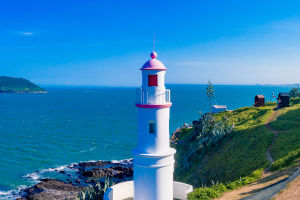Norwegian culture is rich with a tapestry of folk customs and traditions that reflect the country's deep-rooted heritage and storied past.
From vibrant celebrations of seasonal festivities to intricate cultural practices preserved for generations, Norwegian folk customs offer a glimpse into the nation's unique identity and timeless traditions.
This article delves into seven characteristic Norwegian folk customs, shedding light on their historical significance, cultural importance, and enduring legacy, offering an immersive exploration of the customs that continue to shape the rich cultural fabric of Norway.
Syttende Mai: Celebrated on May 17th, Syttende Mai, or Norway's Constitution Day, is a national holiday that commemorates the signing of the country's constitution in 1814.
This festive occasion is marked by vibrant parades, traditional costumes known as bunads, and an array of cultural performances that showcase the nation's rich cultural heritage and patriotic fervor.
Syttende Mai serves as a poignant reminder of Norway's hard-fought independence and its enduring commitment to freedom and unity.
St. Lucia's Day: Observed on December 13th, St. Lucia's Day is a cherished tradition that honors the life of St. Lucia, a symbol of light and hope in Norwegian culture. Celebrated during the winter solstice, this festival is characterized by the presence of young girls dressed in white robes, adorned with wreaths and candles, who partake in processions and sing traditional hymns that evoke a sense of warmth and joy and spiritual renewal, illuminating the darkness of the winter season.
Bunad: The bunad is a traditional Norwegian costume that holds significant cultural and historical value.
Designed to reflect regional diversity and ancestral heritage, bunads feature intricate embroidery, vibrant colors, and distinctive patterns that pay homage to specific regions and communities across Norway.
Worn during festive occasions, weddings, and national celebrations, the bunad serves as a tangible representation of Norway's rich cultural identity and the enduring legacy of its diverse folk traditions.
Nordic Skiing: Nordic skiing, deeply embedded in Norwegian culture, is more than just a recreational activity; it is a cherished national pastime that reflects the country's deep-rooted connection to its snowy landscapes and pristine natural environments.
With a history dating back to ancient times, Nordic skiing serves as a symbol of resilience, endurance, and communal camaraderie, fostering a sense of unity and shared appreciation for Norway's picturesque winter wonderland.
Viking Heritage: Norway's Viking heritage is a cornerstone of the nation's cultural identity, symbolizing a legacy of exploration, adventure, and resilience.
From ancient Norse mythology and epic sagas to the enduring legacy of Viking craftsmanship and seafaring prowess, Norway's Viking heritage serves as a testament to the nation's indomitable spirit and its enduring contributions to maritime exploration, trade, and cultural exchange across the European continent.
Midsummer Celebrations: Midsummer celebrations in Norway are marked by lively festivities that honor the summer solstice and the bountiful abundance of the season.
Replete with traditional folk dances, bonfires, and communal gatherings, Midsummer celebrations exemplify Norway's deep-rooted connection to nature and its reverence for the cycles of the natural world.
These vibrant festivities serve as a joyous occasion for communities to come together, revel in the warm season, and celebrate the spirit of unity and collective merriment that defines Norwegian folk culture.


